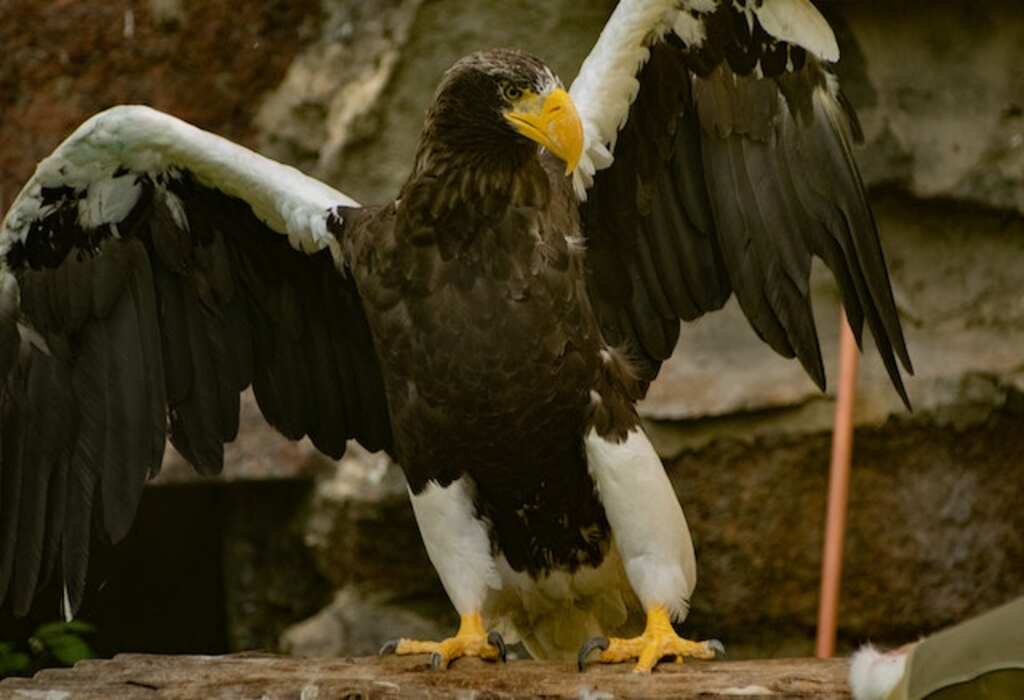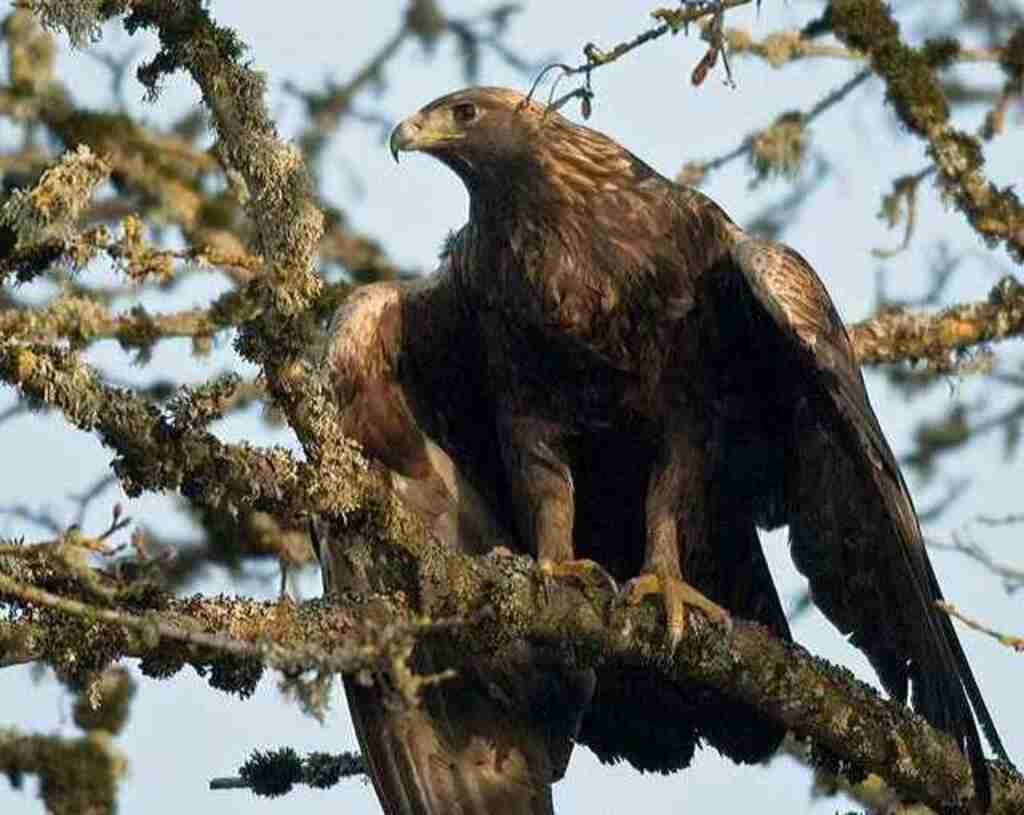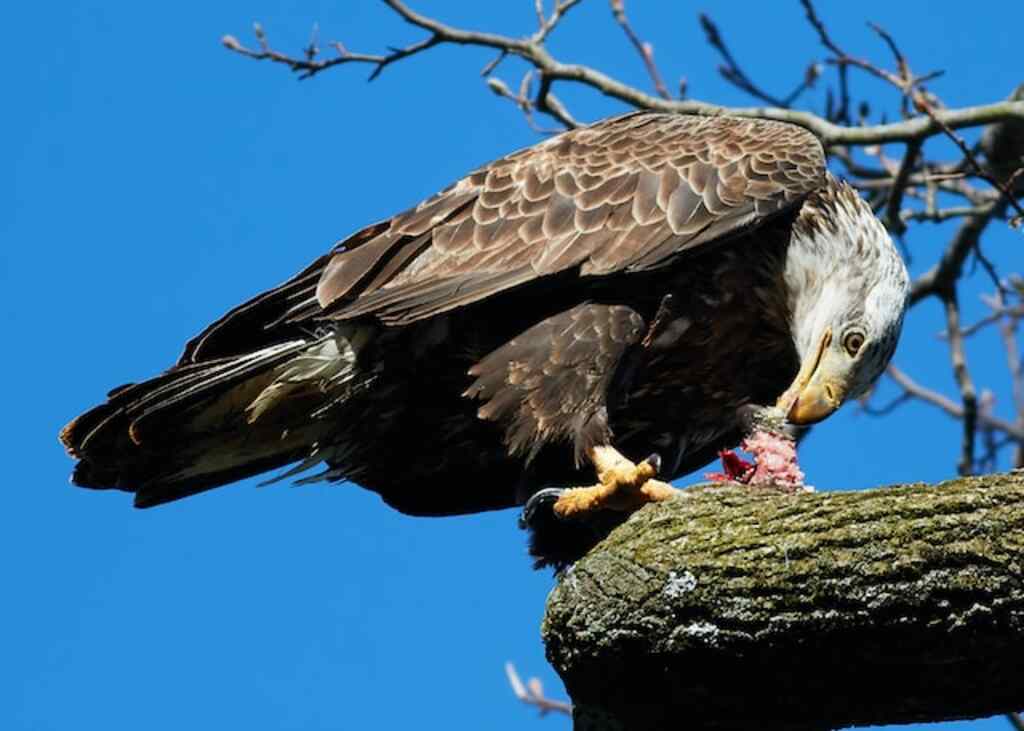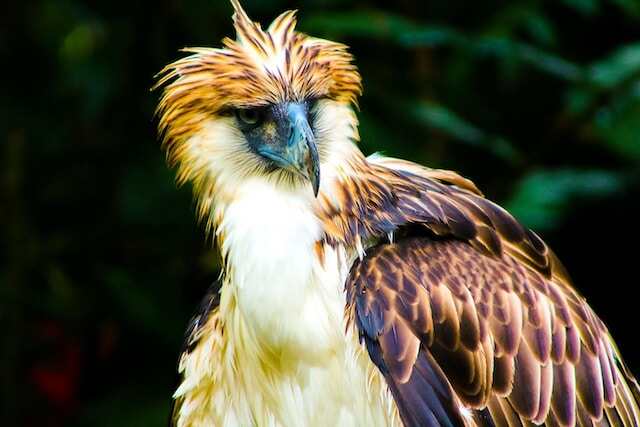In the grand tapestry of nature, where the delicate balance of life hangs in a delicate thread, there exists a magnificent creature – the eagle.
With its majestic wings and piercing gaze, the eagle commands our awe and admiration. Yet, hidden within the realm of its regal presence lies a fundamental question: how much do eagles eat?
Let’s embark on a scientific journey, delving into their daily caloric intake, hunting skills, and the interconnectedness within ecosystems.
Join us as we uncover the secrets of the eagle’s appetite and gain insights into their conservation concerns. Get ready to soar into the fascinating world of eagle dining!
Table of Contents
- 1 Key Takeaways
- 2 How Much Do Eagles Eat
- 3 The Diet of Eagles
- 4 Daily Caloric Intake
- 5 Types of Prey
- 6 Feeding Habits
- 7 Impressive Hunting Skills
- 8 Nesting and Feeding Young
- 9 The Role of Eagles in Ecosystems
- 10 Factors Affecting Food Availability
- 11 Conservation Concerns
- 12 Research and Monitoring
- 13 Conclusion
- 14 Frequently Asked Questions
- 15 Author
Key Takeaways
- Eagles have specific nutritional requirements and need to consume a substantial amount of food each day.
- Eagles primarily eat small mammals, fish, and carrion, and can consume up to 20% of their body weight in a single meal.
- Eagles are opportunistic hunters and adapt their techniques based on prey availability, allowing them to maintain a diverse diet.
- Eagles play a crucial role in maintaining ecosystem balance by regulating populations of prey species and controlling overpopulation.
How Much Do Eagles Eat
Eagles eat a substantial amount of food daily, consuming up to 1-2 pounds (0.5-1 kg) of prey. Their diet varies, consisting mainly of fish, small mammals, birds, and carrion.
Their large size and high metabolic rate necessitate frequent meals to sustain their energy levels and survival.
The Diet of Eagles
The diet of eagles primarily consists of small mammals, fish, and carrion. Eagles have a daily feeding routine that involves hunting and scavenging for their food.
They have specific nutritional requirements that must be met in order to maintain their health and energy levels.
Small mammals such as rabbits, squirrels, and rodents make up a significant portion of their diet. Fish, especially those found in rivers and lakes, are also a common food source for eagles.
In addition, eagles are opportunistic feeders and will consume carrion, or dead animals, when available.
It is important for eagles to consume an adequate amount of food each day to meet their daily caloric intake and sustain their high energy demands.
Transitioning into the subsequent section about daily caloric intake, eagles require a substantial amount of food to fuel their activities.
Daily Caloric Intake
In terms of daily caloric intake, eagles consume a substantial amount of food to sustain their energy levels.
This is due to their high daily activity and the need for weight management. Eagles are highly active birds, spending a significant amount of time in flight, hunting, and defending their territories.
This level of activity requires a constant supply of energy, which they obtain through their diet.
To maintain their weight and ensure optimal performance, eagles need to consume a substantial number of calories each day.
Their diet consists mainly of small to medium-sized mammals, fish, and birds, which provide the necessary nutrients and energy.
The consumption of such a varied diet allows eagles to adapt to different environments and prey availability.
Transitioning into the subsequent section about the types of prey, eagles exhibit remarkable hunting skills and have a diverse range of prey they rely on for sustenance.
Types of Prey
Transitioning to the topic of types of prey, it is fascinating to explore the diverse range of sustenance that eagles rely on for their daily needs.
Eagles are opportunistic hunters, and their prey selection varies depending on their geographical location and the availability of food sources.
They exhibit remarkable adaptability in hunting techniques, using a combination of soaring, stooping, and perching to catch their prey.
Eagles primarily feed on fish, which constitute a substantial portion of their diet, especially for species that inhabit coastal areas or near bodies of water.
However, they are not limited to fish alone and are known to hunt small mammals, reptiles, amphibians, and even other birds.
Their ability to adapt their hunting strategy and prey selection enables them to thrive in diverse ecosystems.
With an understanding of their prey selection and hunting techniques, we can now delve into their feeding habits and the quantity of food they consume on a daily basis.
Feeding Habits
One fascinating aspect of eagles’ feeding habits is their ability to consume up to 20% of their body weight in a single meal.
This remarkable feat is facilitated by their daily feeding routine, which typically consists of two main meals.
Eagles are opportunistic hunters and have a diverse dietary preference, ranging from fish and small mammals to birds and reptiles.
They exhibit a keen sense of vision, enabling them to spot potential prey from great distances.
Once they locate their target, eagles employ their impressive hunting skills, such as their powerful talons and sharp beak, to capture and kill their prey swiftly.
These adaptations allow eagles to efficiently secure their nourishment.
Transitioning into the subsequent section about their impressive hunting skills, eagles showcase an unparalleled prowess in the art of hunting.
Impressive Hunting Skills
Eagles display their remarkable hunting prowess through their adept use of their powerful talons and sharp beak to swiftly capture and kill their prey.
These impressive hunting techniques are a result of their evolutionary adaptations and predatory instincts.
Eagles have excellent eyesight, allowing them to spot potential prey from great distances.
Once identified, they utilize their powerful wingspan and strong flight capabilities to soar through the air with great agility.
When they zero in on their target, eagles use their sharp talons to firmly grasp their prey, while their sharp beak delivers a swift and fatal blow.
This combination of strength, speed, and precision make eagles highly effective hunters.
Transitioning into the subsequent section about ‘nesting and feeding young’, eagles’ hunting skills also play a vital role in providing nourishment for their offspring.
Nesting and Feeding Young
Nurturing their offspring, eagles diligently construct elaborate nests and provide sustenance for their young through their exceptional hunting abilities.
Eagles exhibit fascinating nesting behavior, often building their nests in the tops of tall trees or on cliffs, where they can have a clear view of their surroundings and protect their young from predators.
These nests are constructed with a combination of sticks, grass, and other materials, and can be quite large and sturdy.
Once the eggs are laid, both parents take turns incubating them and ensuring their safety. After hatching, the parents continue to provide parental care by feeding their young with freshly caught prey.
Eagles are skilled hunters and can consume a significant amount of food each day, especially during the nesting season, when their growing chicks have high energy demands.
This parental dedication and exceptional hunting prowess displayed by eagles highlight their important role in maintaining balanced ecosystems.
The Role of Eagles in Ecosystems
The role of eagles in ecosystems is multifaceted and significant.
As apex predators, eagles play a crucial role in maintaining the balance of their respective ecosystems by controlling populations of prey species.
Additionally, eagles contribute to nutrient cycling through their scavenging behavior, as they consume carrion and distribute nutrients throughout the ecosystem.
Understanding the ecological role of eagles is essential for conserving and managing these majestic creatures and the ecosystems they inhabit.
Apex predators
Apex predators, such as eagles, consume significant amounts of food to sustain their high energy requirements.
These majestic birds play a crucial role as apex predators in ecosystems, regulating populations of prey species and maintaining overall ecosystem balance.
Their hunting techniques are refined and efficient, allowing them to efficiently capture and consume their prey.
Eagles possess keen eyesight, powerful beaks, and sharp talons, which enable them to locate, catch, and kill their prey with precision.
Additionally, their strong flight capabilities enable them to cover large areas in search of food.
They primarily feed on small mammals, fish, birds, and carrion, ensuring a diverse diet. By controlling prey populations, eagles contribute to the overall stability and health of ecosystems.
This seamless transition from apex predators to population control highlights the intricate relationship between eagles and the ecosystems they inhabit.
Population control
Population control is a crucial aspect of maintaining ecosystem stability, as it helps regulate prey populations and ensures a balanced distribution of resources.
Apex predators, such as eagles, play a significant role in population control, particularly in controlling the population of smaller animals.
By preying on these animals, eagles help prevent overpopulation, which can lead to the depletion of resources and disrupt the delicate balance of the ecosystem.
Their predatory behavior has a direct environmental impact, as it helps maintain biodiversity and promotes a healthy ecosystem. To illustrate this, consider the following table:
| Predators | Prey | Impact |
|---|---|---|
| Eagles | Small animals | Controls population and ensures resource distribution |
The population control exerted by eagles is an essential component of ecosystem dynamics, and it sets the stage for the subsequent section on scavenging and nutrient cycling.
Scavenging and nutrient cycling
Scavenging and nutrient cycling are vital processes in maintaining the ecological balance and ensuring the efficient utilization of resources within an ecosystem.
Eagles, as opportunistic scavengers, play a crucial role in these processes. Here are four key aspects of their scavenging behavior and nutrient recycling:
- Carrion detection: Eagles possess a highly developed sense of smell, enabling them to detect carrion from great distances.
- Competition: Eagles often compete with other scavengers, such as vultures and hyenas, for access to carrion.
- Consumption rate: Eagles can consume large quantities of carrion in a short period, aiding in the quick removal of carcasses.
- Nutrient transport: As eagles scavenge, they transport nutrients from one location to another, facilitating nutrient cycling and enriching different areas of the ecosystem.
Understanding these aspects of eagle scavenging behavior and nutrient recycling is crucial for comprehending their impact on the ecosystem.
Factors affecting food availability will be explored in the subsequent section.
Factors Affecting Food Availability
Seasonal variations, competition with other predators, and environmental changes are key factors that affect food availability for eagles.
Seasonal variations play a significant role as the abundance and availability of prey fluctuate throughout the year.
Eagles may face increased competition with other predators for limited food resources, which can further impact their food availability.
Additionally, environmental changes such as habitat loss or degradation can lead to a decline in the prey population and subsequently affect the eagles’ access to food.
Seasonal variations
Avid avian appetites alter with the changing climate. Seasonal variations play a crucial role in determining the food availability for eagles. These majestic birds adapt their prey preferences according to the fluctuations in their environment.
- During spring, eagles have a wider range of prey options as many migratory birds return to their breeding grounds. This abundance of food allows eagles to select from a variety of species.
- In the summer months, the availability of fish increases due to warmer water temperatures. Eagles take advantage of this by focusing their hunting efforts near bodies of water, where they can easily snatch fish from the surface.
- As autumn arrives and temperatures drop, eagles rely more on carrion as their primary food source. They scavenge carcasses left behind by other animals, ensuring their energy requirements are met.
These seasonal changes in food availability set the stage for the subsequent section about ‘competition with other predators’.
Competition with other predators
The presence of other predators may pose challenges for eagles in obtaining their preferred food sources. Competition with other predators can have a significant impact on local prey populations, as eagles and other predators compete for limited resources.
Eagles are skilled hunters and have adapted to various hunting techniques to secure their prey.
However, when other predators, such as wolves or bears, are present in the same area, the competition for prey increases.
This can result in a decrease in the availability of preferred food sources for eagles, potentially leading to changes in their foraging behaviors and diet composition.
Understanding the dynamics of competition among predators is crucial in predicting the effects of their interactions on local prey populations.
Transitioning into the subsequent section about ‘environmental changes’, it becomes evident that these factors play a significant role in shaping the ecological landscape.
Environmental changes
One example of how environmental changes can impact eagle populations is the alteration of nesting habitats due to deforestation, which can be likened to removing the foundation of a building, ultimately destabilizing the entire structure.
Environmental impacts, such as climate change, can lead to shifts in vegetation patterns and availability of suitable nesting sites, directly affecting eagle populations.
These changes can result in reduced breeding success, as well as increased competition for limited resources among eagle pairs.
Environmental changes can also disrupt prey availability, forcing eagles to search for alternative food sources or expand their foraging range.
This can result in increased energy expenditure and potential conflicts with other predators.
Ultimately, the cumulative effect of these environmental changes can have significant implications for eagle populations and their long-term survival.
Conservation concerns surrounding these impacts will be discussed in the subsequent section.
Conservation Concerns
Conservation concerns surrounding eagles primarily revolve around the impact of habitat loss and human activities on their populations.
As human populations expand and urbanization increases, the natural habitats of eagles are being destroyed at an alarming rate.
The destruction of forests and wetlands, which are crucial for eagles’ nesting and hunting, has led to a decline in their population numbers.
Conservation efforts are focused on protecting and restoring these habitats to ensure the survival of eagles.
Additionally, human activities such as pollution, hunting, and disturbance near nesting sites pose significant threats to eagle populations.
Researchers and conservationists are monitoring eagle populations and their habitats to better understand the effects of these threats and develop effective strategies for their conservation.
Transitioning into the subsequent section about ‘research and monitoring’, understanding the challenges faced by eagles is essential for implementing successful conservation measures.
Research and Monitoring
Research and monitoring efforts play a crucial role in understanding the ecological dynamics and population trends of eagles, ensuring the effectiveness of conservation measures.
To achieve this, researchers employ various research methods and tracking technologies.
- One common research method is the use of radio telemetry, which involves attaching small transmitters to eagles to track their movements and gather data on their behavior and habitat use.
- Satellite tracking is another important tool that allows researchers to monitor eagle movements over large areas, providing valuable insights into their migration patterns and foraging behaviors.
- Genetic analysis is also employed to study the population genetics of eagles, helping researchers understand the genetic diversity and relatedness among individuals, which is crucial for conservation planning.
By utilizing these research methods and tracking technology, scientists can gain a comprehensive understanding of eagles’ ecological needs and population trends.
This knowledge is vital for implementing effective conservation strategies and ensuring the long-term survival of these remarkable creatures and the preservation of their habitats.
Conclusion
Eagles are truly remarkable creatures with impressive appetites that are vital to the balance of ecosystems.
Understanding their dietary habits and conservation needs is crucial for their survival and the preservation of their habitats
Understanding the ecological importance of eagles’ dietary habits and their conservation needs is essential for the long-term survival of these remarkable creatures and the preservation of their habitats.
Eagles play a crucial role in maintaining the balance of ecosystems through their impressive appetites and specific feeding habits.
Their migration patterns contribute to the dispersal of nutrients and energy across different regions, influencing the populations of their prey species.
In particular, eagles have a significant impact on fish populations, as they rely heavily on fish as their main food source.
By preying on fish, eagles help control their numbers, preventing overpopulation and ensuring the overall health of aquatic ecosystems.
Moreover, eagles also act as indicators of ecosystem health, as any decline in their numbers or shifts in their migration patterns can signal problems within the ecosystem.
Thus, understanding and protecting eagles’ dietary habits and conservation needs is crucial for maintaining the delicate balance of ecosystems and ensuring the survival of these magnificent creatures.
Frequently Asked Questions
How long can eagles go without eating?
Eagles can go without eating for several days, but the duration varies based on factors like age, health, and environmental conditions. Prolonged fasting in eagles can lead to physiological effects such as muscle wasting, decreased immune function, and reduced reproductive success.
Do eagles eat other birds?
Eagles, such as the African fish eagle, consume a variety of prey including fish, reptiles, and birds. Their diet consists of both live prey and scavenged carrion. Eagles are skilled hunters and use various techniques, such as aerial attacks and ambushes, to capture their avian prey.
How does the availability of food affect eagle populations?
The availability of prey plays a crucial role in the population dynamics of eagles. A decrease in prey availability can negatively impact eagle reproduction, leading to declines in their populations.
Are there any efforts being made to protect eagle habitats?
Efforts to protect eagle habitats are crucial for ensuring their survival. According to a study, 70% of eagle nests in the United States are located on private lands, highlighting the importance of conservation initiatives and land stewardship in safeguarding their habitats.
What are some examples of research being conducted to monitor eagle populations?
Various monitoring techniques are employed to study eagle populations, including the use of tracking devices such as GPS and satellite transmitters. These methods provide valuable data on eagle movements, habitat use, migration patterns, and population dynamics, aiding in conservation efforts.








